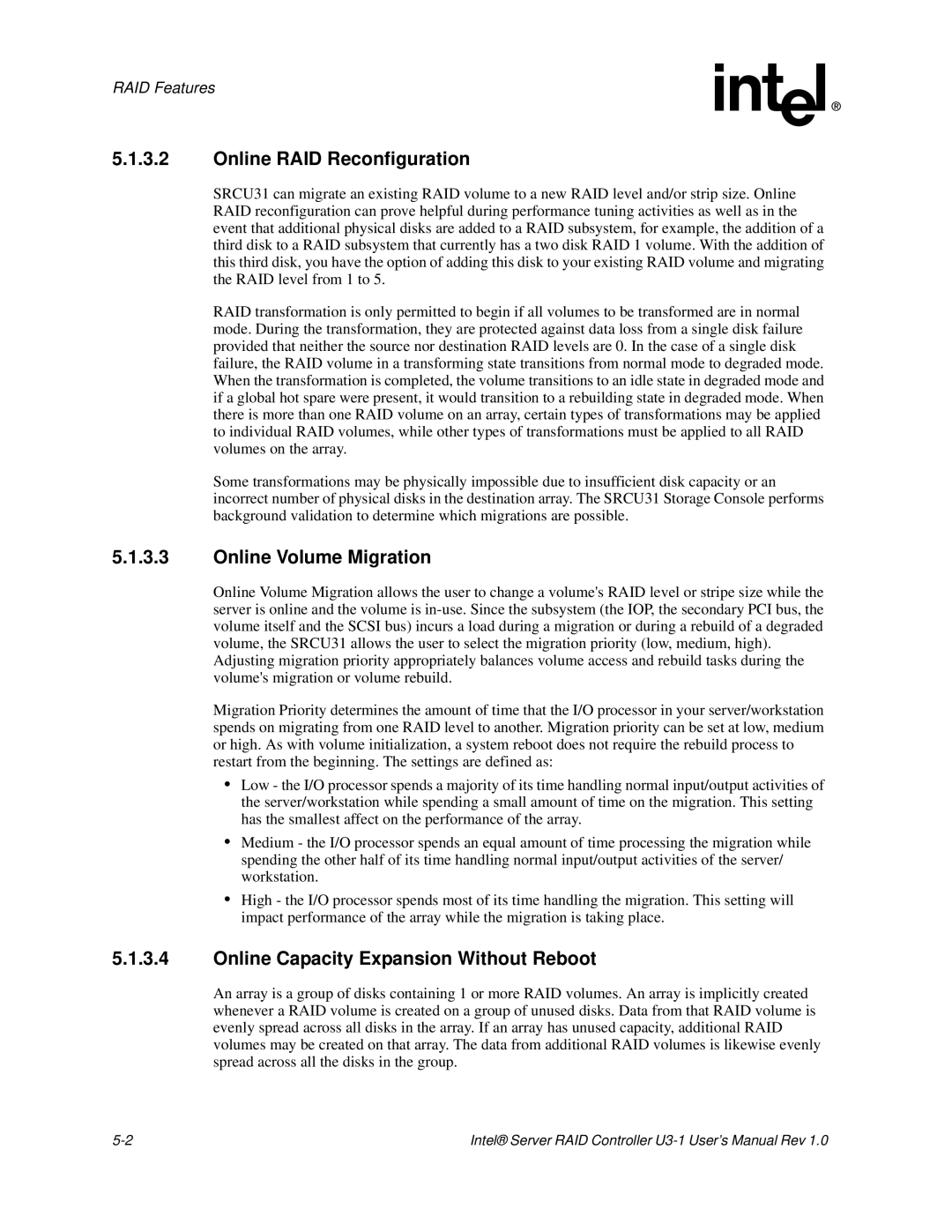
RAID Features
5.1.3.2Online RAID Reconfiguration
SRCU31 can migrate an existing RAID volume to a new RAID level and/or strip size. Online RAID reconfiguration can prove helpful during performance tuning activities as well as in the event that additional physical disks are added to a RAID subsystem, for example, the addition of a third disk to a RAID subsystem that currently has a two disk RAID 1 volume. With the addition of this third disk, you have the option of adding this disk to your existing RAID volume and migrating the RAID level from 1 to 5.
RAID transformation is only permitted to begin if all volumes to be transformed are in normal mode. During the transformation, they are protected against data loss from a single disk failure provided that neither the source nor destination RAID levels are 0. In the case of a single disk failure, the RAID volume in a transforming state transitions from normal mode to degraded mode. When the transformation is completed, the volume transitions to an idle state in degraded mode and if a global hot spare were present, it would transition to a rebuilding state in degraded mode. When there is more than one RAID volume on an array, certain types of transformations may be applied to individual RAID volumes, while other types of transformations must be applied to all RAID volumes on the array.
Some transformations may be physically impossible due to insufficient disk capacity or an incorrect number of physical disks in the destination array. The SRCU31 Storage Console performs background validation to determine which migrations are possible.
5.1.3.3Online Volume Migration
Online Volume Migration allows the user to change a volume's RAID level or stripe size while the server is online and the volume is
Adjusting migration priority appropriately balances volume access and rebuild tasks during the volume's migration or volume rebuild.
Migration Priority determines the amount of time that the I/O processor in your server/workstation spends on migrating from one RAID level to another. Migration priority can be set at low, medium or high. As with volume initialization, a system reboot does not require the rebuild process to restart from the beginning. The settings are defined as:
•Low - the I/O processor spends a majority of its time handling normal input/output activities of the server/workstation while spending a small amount of time on the migration. This setting has the smallest affect on the performance of the array.
•Medium - the I/O processor spends an equal amount of time processing the migration while spending the other half of its time handling normal input/output activities of the server/ workstation.
•High - the I/O processor spends most of its time handling the migration. This setting will impact performance of the array while the migration is taking place.
5.1.3.4Online Capacity Expansion Without Reboot
An array is a group of disks containing 1 or more RAID volumes. An array is implicitly created whenever a RAID volume is created on a group of unused disks. Data from that RAID volume is evenly spread across all disks in the array. If an array has unused capacity, additional RAID volumes may be created on that array. The data from additional RAID volumes is likewise evenly spread across all the disks in the group.
Intel® Server RAID Controller |
